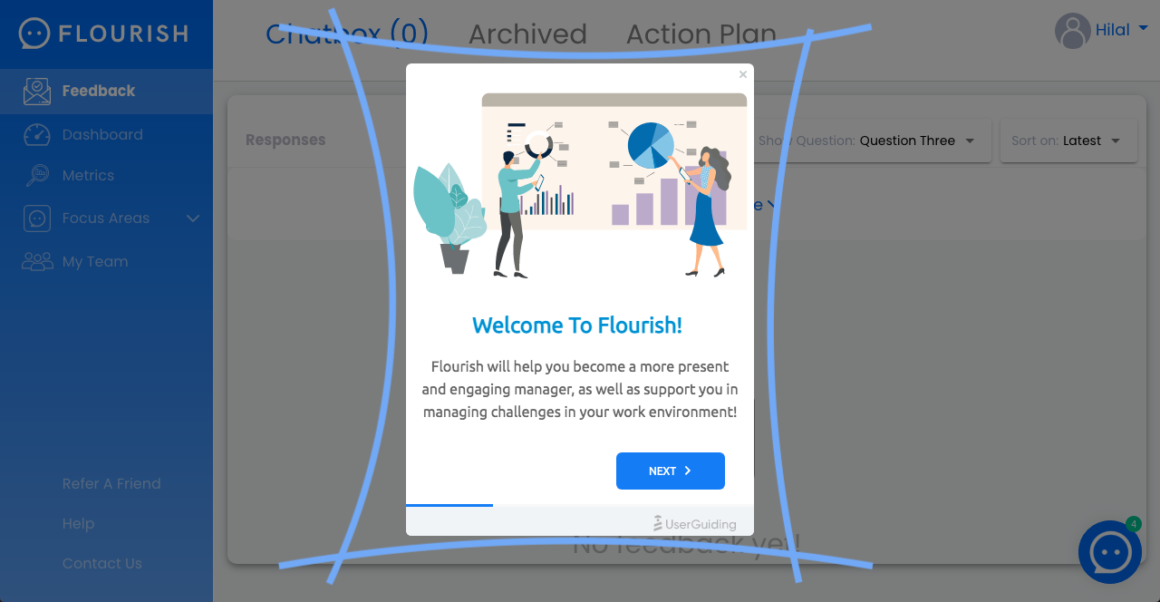A well-designed product tour dramatically simplifies the onboarding process. It assists beginner users in acquiring capabilities and user interface features more quickly than they would if left to their own devices in relation to more complex products. Having a product tour that helps consumers over the learning curve becomes more crucial.
The primary objective of user onboarding is to guarantee that customers quickly see the value of their product or service after signing up for it. Customers are motivated to complete product adoption and activation when they experience the “aha” moment, which occurs when they realize the value of their product.
Effective Product tour facilitate the realization moment in three crucial ways.
It makes the user experience easier to navigate.
Product tours may assist lessen the learning curve for corporate SaaS by instructing users on how to exploit the features most relevant to their employment.
- Inspiring others to do significant action
Product tours that influence customers to take significant action, as opposed to just providing passive overviews of key features, are crucial. This “learning by doing” technique improves knowledge retention, enabling users to acquire product proficiency more rapidly.
- Increases the amount of participation
Well-designed product tours can reduce friction during the user onboarding process. When customers have a great first experience with a product, they are more likely to remain engaged and see the value of that product, hence raising the total user retention rate.
Utilizing product tours is a crucial element of self-service user onboarding. In addition to enhancing product adoption and retention, these techniques, when executed effectively, lower the number of inbound support requests and the need for further user training.
Creating the most effective Product Tour:
There is no universal strategy for product tours. Concentrating on these fundamental concepts, on the other hand, can help new users see value sooner:
- Make it as distinctive as possible.
You cannot expect all new users to follow a basic product tour. To give a more personalized experience, product tours should be divided based on user responsibilities.
- A product tour may be initiated by a user’s activity.
Some product tours should begin immediately once a user logs in, but not all. Product tours are activated in response to a user’s precise activities, ensuring that lectures appear smoothly in the desired area.
- Usage scenarios should align with UI patterns.
Utilize the appropriate product tour user interface pattern to prevent tutorials from becoming disruptive. For instance, although a pop-up modal window may be suitable for an initial welcome message, discrete tooltips may be preferred for rapidly describing a feature or button.
- Maintain the uniformity of the design.
When integrating product tour UI patterns into their SaaS service in order to deliver a smooth user experience, design consistency is crucial. Colour and style incompatibilities may result in an unpleasant customer experience, which may have a detrimental impact on consumer engagement and total adoption.
- Product tours have to be restricted in number.
Avoid building product tours with several phases that need buyers to travel. Their goal is to demonstrate the value of their product to the public as soon as possible. Therefore, it is possible for them to depart the product tour before completing a crucial step, in which case they would lose an activation and adoption opportunity.
- Maintain their emphasis on the “why.”
Focus more on the “why” of their ideas, prompts, and lessons than on the “what” to increase user engagement. It is inadequate to offer just broad instructions on how to do a task. They will be more inclined to connect with their product and continue the adoption process if they stress the relevance of their efforts.
- Modifications will be made as required.
Continuously monitor their product tours’ success. Are they left in the midst of a project? Specifically, do they function better for one group of consumers than another? Finally, analyze the data collected during the product tours and make any necessary adjustments to the onboarding procedures.
When it comes to product tours, there is a narrow line between those that effectively inspire aha moments and those that just disrupt the user experience. This section will assist them in creating product tours that integrate smoothly with your user experience.

